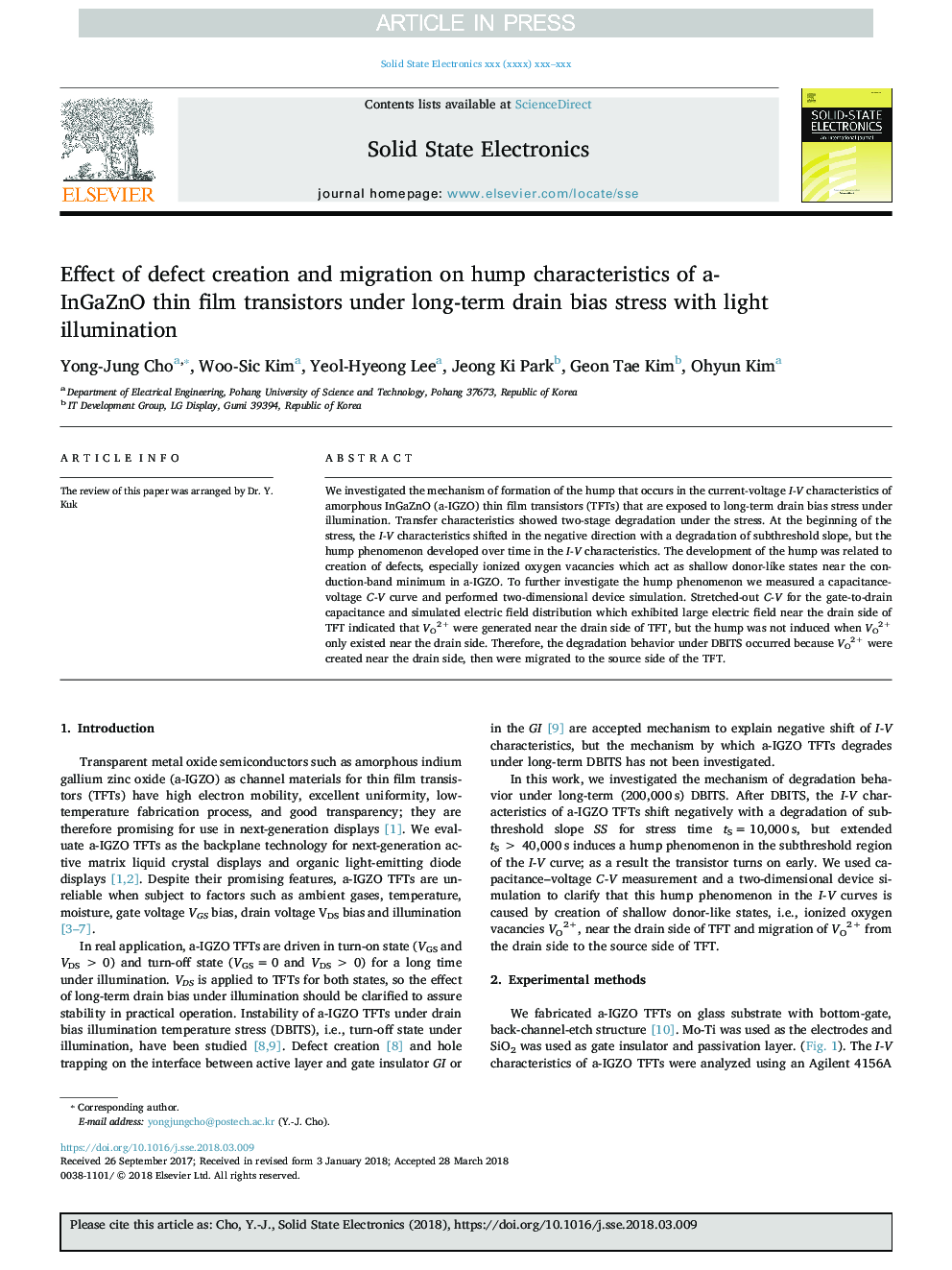| Article ID | Journal | Published Year | Pages | File Type |
|---|---|---|---|---|
| 7150383 | Solid-State Electronics | 2018 | 6 Pages |
Abstract
We investigated the mechanism of formation of the hump that occurs in the current-voltage I-V characteristics of amorphous InGaZnO (a-IGZO) thin film transistors (TFTs) that are exposed to long-term drain bias stress under illumination. Transfer characteristics showed two-stage degradation under the stress. At the beginning of the stress, the I-V characteristics shifted in the negative direction with a degradation of subthreshold slope, but the hump phenomenon developed over time in the I-V characteristics. The development of the hump was related to creation of defects, especially ionized oxygen vacancies which act as shallow donor-like states near the conduction-band minimum in a-IGZO. To further investigate the hump phenomenon we measured a capacitance-voltage C-V curve and performed two-dimensional device simulation. Stretched-out C-V for the gate-to-drain capacitance and simulated electric field distribution which exhibited large electric field near the drain side of TFT indicated that VO2+ were generated near the drain side of TFT, but the hump was not induced when VO2+ only existed near the drain side. Therefore, the degradation behavior under DBITS occurred because VO2+ were created near the drain side, then were migrated to the source side of the TFT.
Related Topics
Physical Sciences and Engineering
Engineering
Electrical and Electronic Engineering
Authors
Yong-Jung Cho, Woo-Sic Kim, Yeol-Hyeong Lee, Jeong Ki Park, Geon Tae Kim, Ohyun Kim,
